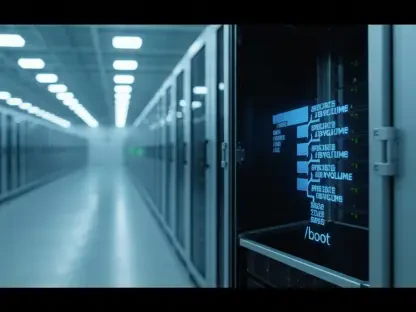In the fast-paced world of cybersecurity, Managed Service Providers (MSPs) are constantly striving to balance operational efficiency with the need to combat ever-evolving threats. Exploring this complex landscape, Vijay Raina, a renowned expert in enterprise SaaS technology, shares his insights into a promising solution: the integration of Cork Protection with Rewst, which combines real-time risk intelligence with automated remediation workflows. This integration is reshaping how MSPs manage security, offering a pathway from reactive to proactive risk management.
Can you explain the main challenges that Managed Service Providers face in today’s threat environment?
Managed Service Providers today are dealing with a rapidly changing threat landscape. One of their primary challenges is keeping pace with the sheer volume and sophistication of cyber threats. These threats are constantly evolving, requiring MSPs to be ever-vigilant. Additionally, MSPs must ensure operational efficiency and manage resource constraints, all while adhering to stringent compliance requirements. The environment is such that even small security lapses can have significant repercussions.
What are the key features of the integration between Cork Protection and Rewst?
The integration between Cork Protection and Rewst is designed to streamline and enhance cybersecurity for MSPs. Cork’s platform provides continuous monitoring of client environments to deliver actionable insights. It identifies potential vulnerabilities like missing MFA, outdated software, and misconfigured tools. These insights seamlessly integrate with Rewst’s automation engine, which manages the remediation process. It automates tasks such as isolating devices, enforcing security policies, or initiating support tickets, thus reducing the manual workload for MSPs.
How does Cork’s risk intelligence platform operate, and what kind of insights does it provide?
Cork’s risk intelligence platform operates by continuously scanning client environments, identifying risk factors that could compromise security. It provides insights into common vulnerabilities such as absent multi-factor authentication, outdated applications, or weak configurations. These insights are vital because they highlight the areas most susceptible to exploitation by attackers, enabling MSPs to take timely actions to mitigate these risks.
Can you give examples of common security issues that Cork identifies, like missing MFA or outdated software?
Certainly, some of the recurrent security issues that Cork detects include missing multi-factor authentication (MFA), which can leave accounts vulnerable to unauthorized access. Another common issue is outdated software, which can harbor exploitable vulnerabilities. Misconfigured remote monitoring and management (RMM) tools are also flagged, as these are often targeted by attackers looking to gain control over systems.
How does Rewst’s automation engine handle the insights provided by Cork’s platform?
Rewst’s automation engine is designed to act swiftly on the insights provided by Cork. Once it receives data about security vulnerabilities, it can autonomously trigger necessary workflows. This might include anything from automatically patching software to isolating compromised devices. The beauty of Rewst’s engine is in its ability to minimize manual intervention, ensuring a faster, more reliable response to security threats.
What specific actions can Rewst’s workflows automate to address security gaps?
Rewst’s workflows can automate a variety of actions to tackle security gaps effectively. These include deploying patches to vulnerable systems, enforcing security policies such as password changes, and isolating compromised networks or devices to prevent the spread of an attack. Additionally, if an issue requires human intervention, Rewst can generate detailed tickets, providing the necessary context for efficient troubleshooting.
How does the integration help in reducing human error and minimizing alert fatigue for MSPs?
By automating routine security tasks and leveraging real-time data insights from Cork, the integration significantly reduces the potential for human error. It ensures that remediation happens swiftly and accurately, minimizing the fallout from any oversight. Furthermore, automation helps cull the volume of alerts that human technicians have to process, reducing what we call ‘alert fatigue’—this phenomenon where too many alerts diminish the ability to spot genuine threats among false positives.
In what ways can MSPs customize the automation workflows to fit their clients’ environments?
MSPs can tailor the automation workflows provided by Rewst to align with each client’s unique environment and compliance needs. This customization can be as granular as defining specific policies for different devices or user groups. Whether it’s setting varying thresholds for alerts or creating bespoke response protocols, MSPs have the flexibility to design workflows that best fit their operational landscape.
What is ‘smart ticketing,’ and how does it function within the Cork and Rewst integration?
‘Smart ticketing’ within the integration involves the automatic generation of support tickets that contain comprehensive information about the identified threat and the steps already taken by the system. These tickets are crafted with all necessary details, enabling IT personnel to quickly understand the issue and act efficiently. This process reduces the time spent diagnosing problems, thus optimizing the entire resolution workflow.
How does this integration shift the approach from reactive to proactive risk management for MSPs?
The Cork and Rewst integration shifts MSPs from a reactive to a proactive stance by enabling real-time monitoring coupled with immediate automated responses. Instead of responding to incidents after they occur, MSPs can now preemptively address vulnerabilities and potential threats. This fundamental change enhances their ability to safeguard systems before issues escalate, ensuring higher levels of security and reliability for their clients.
Can you describe how the integration affects the time from threat detection to resolution?
By automating the identification and remediation processes, the integration drastically reduces the time between detecting a threat and resolving it. Real-time data flow and automation mean that threats can be neutralized often without human intervention, allowing for faster and more efficient resolution, which is crucial in minimizing the impact of potential breaches.
Why is automated remediation important in managing security vulnerabilities?
Automated remediation is key to managing security vulnerabilities because it allows for immediate action, the moment a threat is detected. This quick response can prevent minor security gaps from becoming significant breaches. It also reallocates valuable human resources away from routine tasks, enabling them to focus on more strategic initiatives that could better enhance the organization’s security posture.
How does this integration help MSPs reclaim time for more strategic initiatives?
By automating the mundane and repetitive tasks involved in security management, MSPs can reclaim a substantial amount of time that can be redirected to more strategic uses. These could include developing new service offerings, improving existing infrastructures, or investing in innovation that further solidifies their competitive edge and adds value to their client engagements.
What role does Suparna Chawla Bhasin play at CyberRisk Alliance, and how does her expertise contribute to the channel brands like MSSP Alert and ChannelE2E?
Suparna Chawla Bhasin plays a significant role as the Senior Managing Editor at CyberRisk Alliance, where she oversees the editorial direction and content development. Her wealth of experience in technology and media allows her to deliver high-impact content that resonates with the audience. Her strategic oversight ensures that information is both relevant and timely, supporting the needs of cybersecurity professionals across various platforms like MSSP Alert and ChannelE2E.
How does the background of Suparna Chawla Bhasin influence her approach to content development and editorial workflows?
Suparna’s background in technology and education informs her holistic approach to content development and editorial workflows. She leverages her knowledge to create content that not only educates but also engages the audience at a deeper level. Her experience allows her to refine editorial processes, ensuring they’re both efficient and aligned with the evolving needs of readers and the dynamics of the cybersecurity landscape.
What is your forecast for MSPs in the realm of cybersecurity and risk management with evolving technologies like this integration?
Looking ahead, I foresee MSPs increasingly adopting integrations like the one between Cork and Rewst to bolster their cybersecurity frameworks. As threats become more sophisticated, the demand for proactive, automated solutions will grow. MSPs that embrace such innovations will likely outperform those that stick to traditional methods, gaining an edge by being both efficient and adaptable in managing security risks. The ability to automate and anticipate threats could redefine how MSPs operate, allowing them to offer a higher level of security assurance to their clients.









